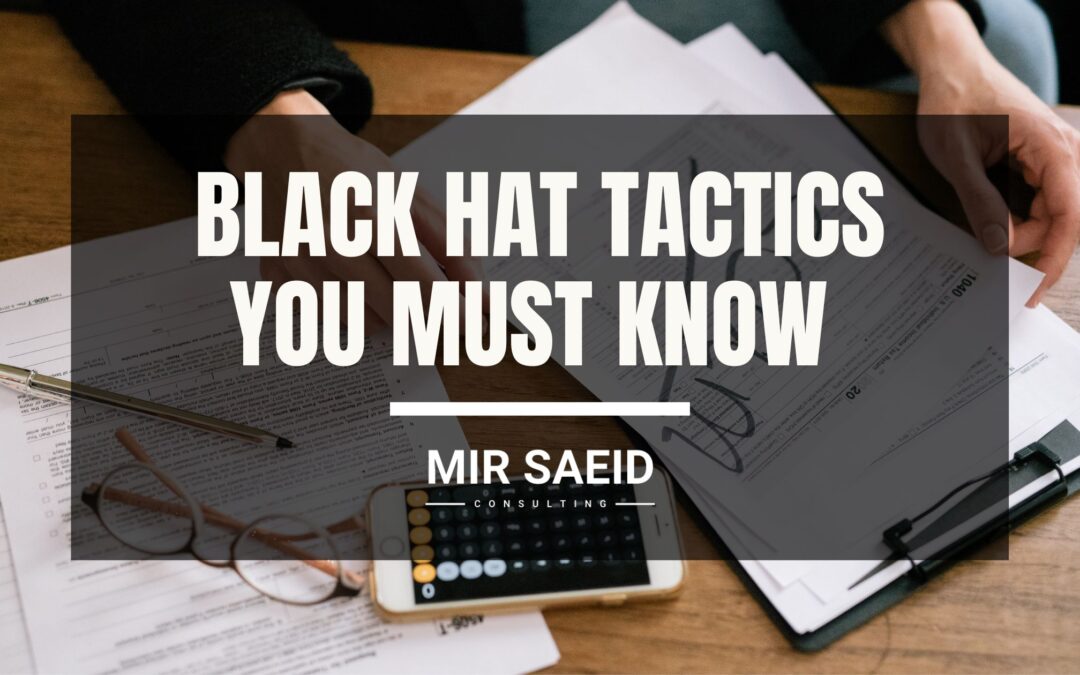Sabotage is real and you need to avoid this.
You know many sellers can create an account to be kicked out. Yeah, this is true. They will come in and manipulate every detail on your Amazon listings. This user will create an entirely new photo collage and then sell your items in packs of two. Somehow, he is going to change every single detail to show you are selling a pack of two items with the hopes of getting so many negative reviews about this that you get shut down.
Ultimately, Amazon kicks them off, but you still have to deal with the repercussions. This business phenomenon is called Amazon black hats and to remain secure from these attacks read this article and understand the tactics of remaining Amazon Black Hats. You will come to know about:
- What are Amazon black hats?
- Well-known black hat tactics.
- Protecting yourself from black hat tactics.
- Final Thoughts
What are Aamzon Black Hats?
Amazon Black Hats are the sellers who ill-operate, weaken, and trick to boost their own business or of their client against their competitor. Their main strategy is to increase their likelihood of business while sinking their competitor.
It can lead to being wiped completely from the business search results or gaining a lower position when your product is searched online. This practice is unethical and goes against the rules of fair marketing.
You can think of old westerns where the villainous cowboy was identified by the color of his hat. You always knew the bad person because he wore a black hat. Unfortunately, Amazon black hats are not so easily identifiable you need to know their tactics to understand what are they up to.
Click to Reach out to a Top Digital Marketing Consultant in Toronto
Well-Known Amazon Black Hats Tactics
1. Getting access to confidential data from an Amazon Insider
This is a tactic where an individual or a group of workers from Amazon offers access to confidential information for the sake of manipulation. A black hat seller will get access to the data and then manipulate it for his own sake or the sake of his customer.
One example of this tactic is the manipulation of the Amazon algorithm. A program called A10 on Amazon has all the codes to determine the ranking of all product listings. It is the top factor studied by any Amazon seller and expert as it is the key to success is to understand how listings are being ranked. A black hat hacker might get the information about this program from an insider and then manipulate the listing for his gain.
As for you, beware of any emails, calls, text messages, and offers from any groups or individuals telling you that they are from Amazon. They will tell you that they can provide you with buyers’ internal contact information, which you can use to generate feedback and reviews. Do not fall prey to these dirty tactics as the boost of increased reviews may help you at first.
2. Posting fake positive reviews
These include three methods: soliciting reviews from different channels, giving incentives to people for positive reviews, and manipulating parent-child pairing. These are described as under:
- Soliciting reviews from different channels. Asking your family and friends for positive reviews is the best way of getting positive reviews. At a large level, black hat tactics include paying people from different channels to give positive reviews. This happens at a systematic level. An example can illustrate this better. For instance, asking buyers to give positive reviews on social media sites or through email as well as asking them to remove the negative reviews they left. More than this, the next dirty strategy is giving buyers something in exchange for a review.
- Giving incentives to people who will leave positive reviews. All Amazon reviews should be genuine as the sale of products depends on that. Not only this almost 82% of customers buy their required products while paying good attention to reviews of other customers. However, asking people to give good reviews irrespective of their true experience is unethical and misleading. Hence, giving incentives to get positive reviews is a dirty tactic.
- Manipulating parent-child pairing. Parent-child listing is a function accessible on Amazon, but it becomes a breeding ground for policy-breaking schemes when the products paired are not related to each other. Some sellers use this tactic to combine the reviews received by the parent listing and the child listing. With this, the boost in ranking will be quicker.
Also read: What is an Amazon FBA Coach?
3. Filling competitor’s pages with negative reviews and fake infringement claims
It is obvious that positive reviews boost ranking and negative feedback from customers certainly pulls your product listing down. Some of the sellers go as far as leaving fake negative reviews to their competitors. In addition, people hired by competitive sellers click the obstructive words as “helpful”. As a result, the chance of the product sale goes down.
Sometimes to be more efficient in hurting someone’s business and to make the negative feedback look more admissible fake infringement calls are made. This is done to quicken the suspension of a competitor’s account. These false claims include violation of patent laws, or they report that the products do not abide by Amazon regulations on dangerous and prohibited products.
Amazon suspended the account during the period of investigation. When a complaint reaches Amazon seller accounts are prohibited from selling until proven innocent of the claims, thus putting you behind your competition in sales during this time.
4. High jacking the List
You should always keep an eye on your listing. If not done it becomes more prone to attack by hijackers. Those accounts, which are slow in uploading or inactive, are the main targets of these attacks. Aside from hijacking dormant accounts, hijackers can also target competitors’ accounts by sabotaging the content. Here is more information about this phenomenon:
- The reviews are not related to products that are being sold in your portal.
- The title of the product is different from the actual product sold.
- Alterations are made to the details and content of the listing.
5. Sending fake purchases to ghost addresses and people
Amazon has more than 300 million customers, but for the black hats, there are more! One dirty scheme of sellers who want to rank higher on Amazon is to boost their sales by sending empty envelopes and packages to random addresses and people and counting them as a sale. One of the factors measured by the Amazon algorithm is the number of sales and conversion rate. If you receive an empty package from Amazon, or you know of any sellers doing this practice, report them to Amazon.
6. Fake IP Claims
You should know that black hat sellers also make fake IP claims. However, the good is that we have seen Amazon beginning to take action against sellers and services who are consistently submitting baseless IP claims. However, the burden of proving it is on you. In other words, the burden is on you to prove that the complaint is fake. If Amazon ignores you, you may need to push them and push very hard.
The easiest place to start your investigation is with the complainant. Are they the rights owner or the rights owner’s agent? If not, dispute it!
Protecting Yourself from Black Hat Attacks
- Register yourself on the Amazon brand registry. This is very important and recommended to everyone who sells products online on Amazon. Registering your brand in the Amazon Brand Registry will help you protect and demonstrate your intellectual property. Besides, this is very useful in fighting against counterfeits and fake infringement claims. From the moment your application is accepted, not only will you have a more appropriate brand representation, Amazon will provide you with additional tools to protect yourself:
- Project Zero. A more advanced project for protection and autonomy to brands in their fight to defend their intellectual property theft, so much so that zero counterfeiting can be achieved within the marketplace. It involves an additional daily scan of five billion listings in search of fraudulent products, it offers a self-service service that allows brands enrolled in the project to remove themselves from listings that use their image and brand.
However, Project Zero is not yet open to all vendors, but if you are already part of the Amazon Brand Registry, you can apply for inclusion in the program.
Finals thoughts
Amazon Black hat sellers can attack any successful seller. You would think that a trillion-and-a-half-dollar technology company would muster a bit more than we are seeing in terms of giving brands a chance to defend themselves, but for the moment, it’s all up to you. You are the one responsible for protecting yourself right now. Amazon has made a few tools available to you, and they can see inside your account — you cannot. Prepare, and be ready to counter abuse the right way.
You cannot be shy in defending yourself. You have to be very strong and giving up is no option for you. These fake people can take down your business many times on Amazon but you need to be consistent and firm on your stand. Hope this Helps!
If you are looking for a Digital Marketing Expert or a Web Development Consultant, you can contact me for all your Digital Marketing needs such as Search Engine Optimization, Copywriting, Email Marketing, Marketing Automation, Social Media Marketing, and Paid Advertising. I am also a specialist in Content Marketing and Inbound Marketing.
Looking for Kashmir Exclusives? Then head to Kashmirica where we curate products straight from the valley of Kashmir.
Read other blogs:
- TikTok Ads Manager- The Complete Guide
- 6 Best Ways To Start Making Money on TikTok in Canada
- Amazon FBA or Dropshipping: Which one is Right for You?
- How to Start an Online Arbitrage in Canada?
- How To Run Spotify Ads in Canada? The Complete Guide
- 18 Common Amazon Ungated Amazon Catergories You Must Know
- Top 4 Amazon Influencers in Canada

Mir is a British-educated Digital Marketing Expert with 10+ years of experience in the B2B, D2C, and eCommerce Industries. Having worked with 50+ startups and SMEs, he has a clear understanding of what it takes to establish growth on online platforms.
He is also the Founder of Kashmirica, a social impact brand that aims to take exclusives from Kashmir to the Global consumer. An enthusiastic cultural entrepreneur, Mir is driven by a passion to bring about a social impact.
An avid reader, he loves writing about marketing, and entrepreneurship.













